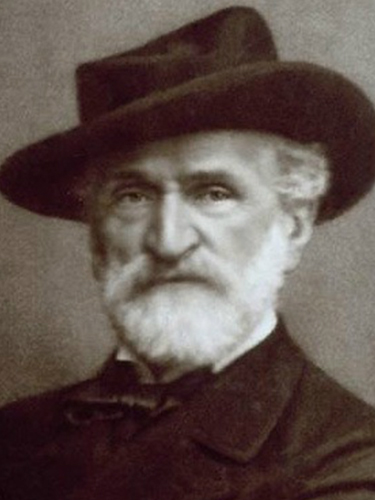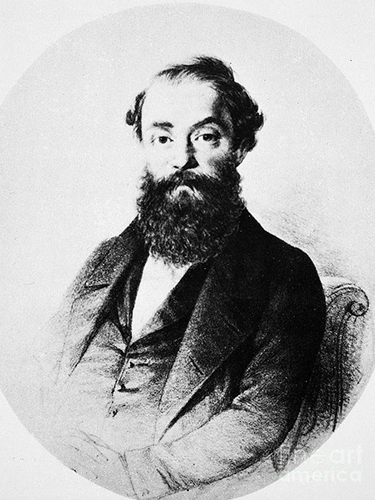
Rigoletto
Welcome to Lyric's learning resources!
This is your all-access pass to the world of opera and musical theater. Scroll down to access the following resources to help you learn more.
Overview
Historical and Cultural Timeline
Composer and Librettist Biographies
Overview
This GoogleSlides presentation covers essential information your students need to know about the opera.
Act 1: Scene 2 “Pari Siamo” (We are the same)
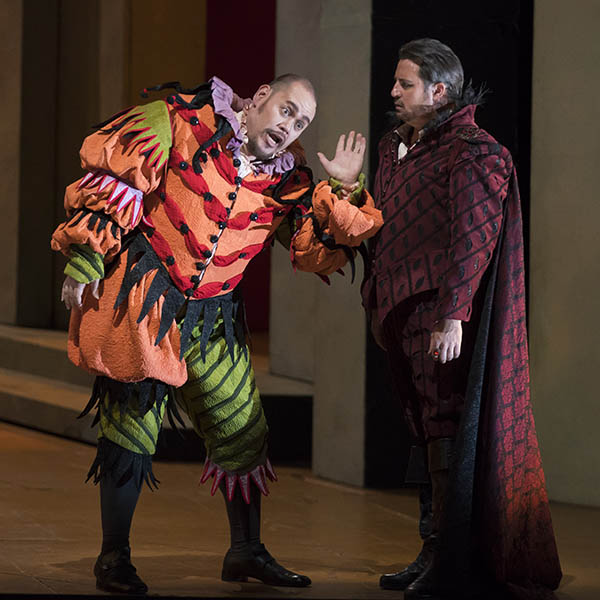
This aria takes place in the second scene of the opera. Rigoletto is on his way home from work and happens to run into Sparafucile, who offers his services as an assassin. He declines, but notes that they are similar– Sparafucile cuts men down with a knife, Rigoletto cuts men down with his words.
Things to listen for:
- The aria begins in with Rigoletto singing alone. The orchestra arrives with a large chord on the word “pugnale,” which means dagger. It creates a musical “stab.”
- In this aria, the orchestra reacts to Rigoletto’s words. He sings and the orchestra responds.
- As Rigoletto’s emotions intensify, his melody and the orchestral responses begin at higher notes with each new statement.
Act 1: Scene 2 “Figlia!” “Mio padre!” (Daughter! My father!)
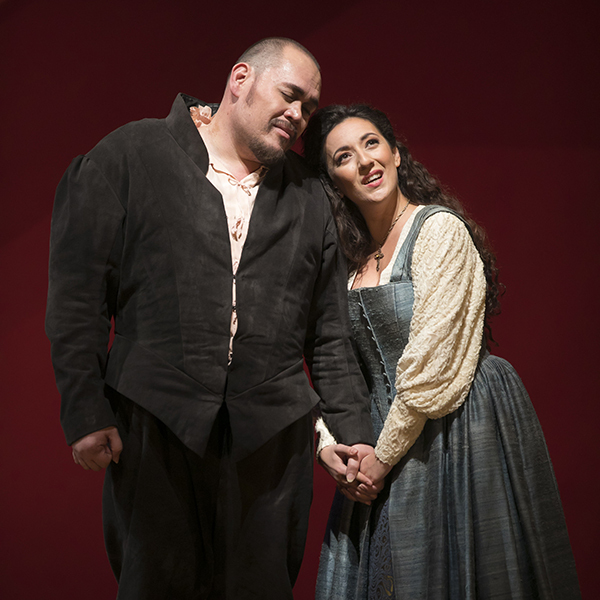
Sung by Rigoletto and Gilda
This duet immediately follows “Pari siamo.” In it, we see a different side of Rigoletto. The opera opens with Rigoletto making fun of the crowd at the home of the Duke, which he admits is cruel. Once the door opens to his home, we see a warm and cheerful Rigoletto who loves his daughter and she clearly loves him, too.
Things to listen for:
- Compare this duet with “Pari siamo.” The previous aria was in a minor key which indicated Rigoletto’s seriousness. This duet is much faster and in a bright, major key.
- Many duets feature two melodic ideas (often a melody and a countermelody). Instead of that, Verdi takes a single melodic line and shares it between father and daughter. When Rigoletto finishes, Gilda picks up where he ended. Musically this demonstrates the close relationship between the characters.
Act 1: Scene 2 “Gualtier Maldè!...Caro nome”
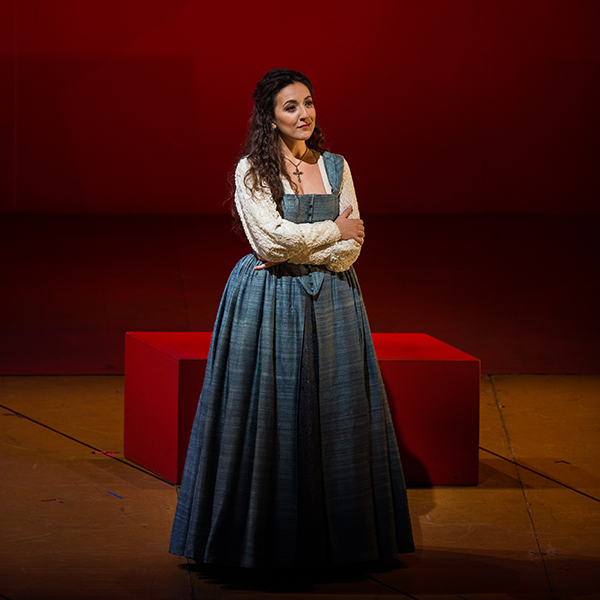
Sung by Gilda
The Duke has disguised himself as a townsperson to get close to Gilda. His fake name is Gualtier Maldè (in English, Walter Maldè). Gilda has never interacted with a man before, other than her father. Gilda has never spent time with a man before, other than her father. She is infatuated. This aria is an expression of her giddy teenage love.
Things to listen for:
- The aria opens with Gilda listlessly staying the name of her newfound love. As she sings, the flute is playing a series of notes upward, in a harp-like fashion. This orchestration creates an ethereal feel, which makes sense, because Gilda has her “head in the clouds.”
- After the “ethereal” introduction, the music changes. The orchestra is lighter and the overall feeling of the aria becomes dance-like.
- As Gilda sings, there are some birdlike responses in the violins.
Act 3: “La donna e mobile” (Woman is fickle)
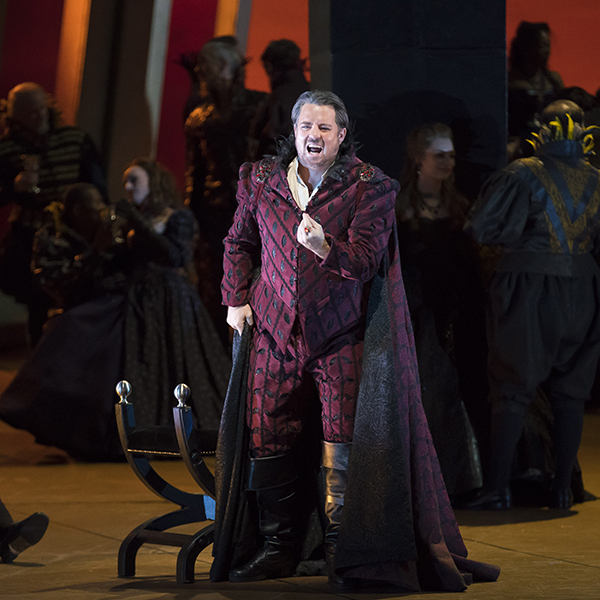
Sung by the Duke of Mantua
This is probably the most famous aria in all of opera (and no doubt the catchiest). The Duke is not a nice man. This aria highlights his lack of respect for women. He essentially says that women aren’t very smart or reliable. (Lyric disagrees with the Duke’s opinion completely.)
Things to listen for:
- The aria is in triple meter and has a very traditional “oom pah pah” accompaniment. This style is popularly used for drinking songs, similar to German polkas.
- The melody is catchy because of its simplicity and repetition. There are no big leaps or fast notes in this aria. Starting with the first statement: “La donna e mobile” and “qual piu ma vento” are very similar, and so are “muta d’acennto” and “e di pensiero.” Basically, using pop music terminology, Verdi knew how to write a “hook.”
Act 3: “Bella figlia dell’amore” (Beautiful daughter of love)
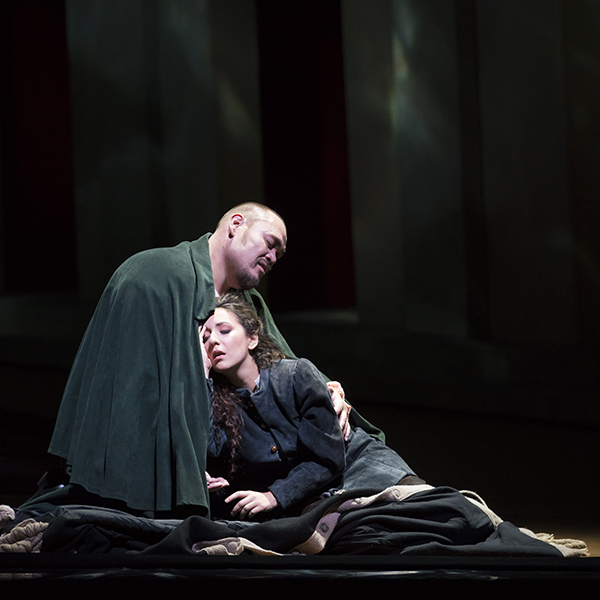
Sung by the Duke, Maddalena, Gilda, and Rigoletto
This quartet is another famous opera moment. The Duke and Maddalena are conversing inside the home of Sparafucile. Gilda and Rigoletto are outside watching this conversation through a window. The Duke is using his charms to seduce Maddalena, who is not impressed by his flattery. Gilda is heartbroken that her beloved “Gualtier” has betrayed her. Rigoletto is reassured about his plot for revenge.
Things to listen for:
- Listen for the musical differences in the pairs at the beginning. Gilda and Rigoletto are singing phrases that use longer notes and have a more solemn tone. The Duke and Maddalena sing many notes without any seriousness.
- Maddalena laughs at the Duke singing “ah ah!” At the same time, Gilda sings her heartache in short, clipped notes that sound as if she is stunned by the situation—like she is catching her breath.
- Near the end of the excerpt, the Duke and Maddalena sing a long note on the word “Si” (“Yes”) while Gilda repeatedly sings “No, no, no…”. The Duke and Maddalena are having fun, while Gilda is astounded by the infidelity of her beloved “Gualtier.”
MacNeil, Grist, Gedda, di Stasio; Theatre dell’Opera, Roma, cond. Molinari-Pradelli. (EMI)
Music for Rigoletto provided by through generous arrangement with Warner Classics, Official Education and Promotion Music Provider for Lyric Opera of Chicago.
Photos: Todd Rosenberg, Lyric Opera of Chicago
